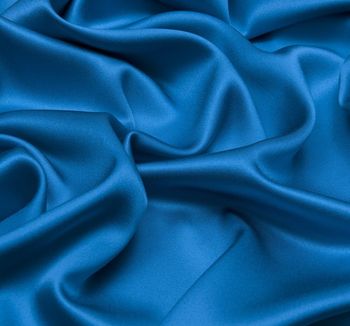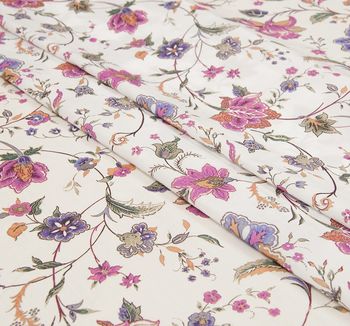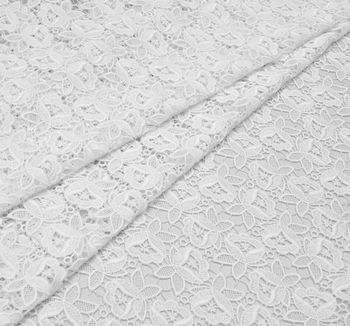Silk is a timelessly trendy natural fabric woven from the cocoons of silk worms. The world’s most famous fashion brands regularly apply it for various men’s and women’s outfits earning the admiration of the audience.
Alpaca Fabrics – The Comprehensive Guide
Alpaca wool is one of the most exclusive and sought-after types of wool known to man. Rare and in high demand, this animal fiber comes in 22 natural colors, from black and brown to grey and ivory. It can be easily dyed or mixed with one another to get interesting color combinations for the most exquisite alpaca fabrics.
Alpaca fleece is silky soft to the touch and makes three times warmer fabrics compared to merino sheep’s wool. Naturally waterproof and free of oil, it is hypoallergenic and is a real escape for those with sensitive skin.
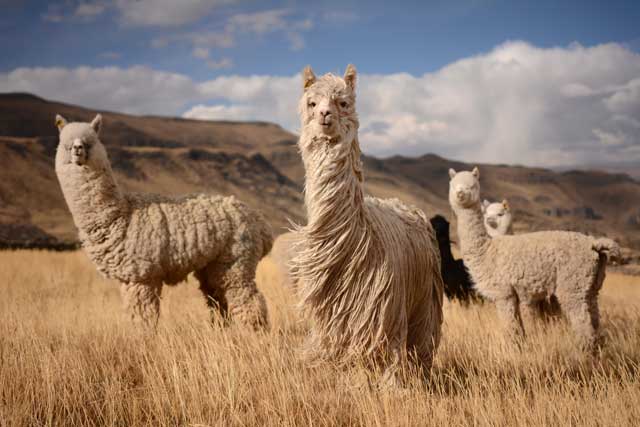
Why Is It Deemed Luxury?
The alpaca is a delicate animal from camel family. There are two well-known breeds – Suri and Huacaya, and their fleece is slightly different. Suri alpacas are covered with silky and lustrous long locks, while Huacayas appear full and soft.
Alpaca fiber is unique in many ways, and we are far from the end of discovering all of its amazing features. Below are some characteristics that make this fleece so valuable:
- 100% natural
- Soft
- Free of lanolin
- Hypoallergenic
- No pilling
- Dyes well
- Not prickly
Thin and airy wool is warm even in wet condition and effectively resists sun radiation. These features of alpaca wool let the animal survive in tough weather conditions with sharp changes in temperature.
An adult alpaca produces no more than 10 pounds of fiber per year, from 18 to 25 microns in diameter. The thinner the fiber, the more luxurious the fabric is, so the wool of the youngest alpacas is regarded as the most precious and used for the warmest clothing. Sheared off, the fiber is then spun into yarn and sold to weavers. Alpaca wool fabrics are used both for outerwear, like coats and jackets, and lighter apparel like pullovers, dresses and cardigans. You can also buy alpaca yarn and knit it into something soft and luxurious – a sweater, a scarf or a pair of mittens.
Alpaca vs. Sheep’s Wool vs. Cashmere
Wool is always good, because it is natural and keeps you warm even in the cold winter. While many people still stick to merino wool and cashmere, alpaca has been gaining popularity among those who value comfort.
Sheep’s wool fabrics are versatile and make all kinds of garments, from coats and vests to pants and dresses. Cashmere is softer, silkier and more lightweight. A traditional favourite for cozy sweaters and cardigans, it is also ideal for baby garments and blankets. Alpaca, however, is an exclusive alternative. Not only is it warmer, stronger and more durable, but it also does not contain lanolin – perfect for those with allergies!
Alpaca is resistant to pilling and static. It weighs almost nothing – all because of tiny air pockets. With its lofty texture and silky feel, this type of fiber might as well be called the next ultimate luxury. High quality alpaca garments can easily become heirloom pieces.
The Most Precious Colours
As for alpaca wool colours, their range varies heavily in nature: there are 22 of them. Those can be darker shades, such as dark blue, dark brown, black, brown, silver, or lighter ones, such as pink, grey, and white. The latter colour is the most popular and precious one, which is explained by the following reasons:
Traditions. Historically, European alpaca breeders have been taking tireless efforts to create the white wool animal, while locals always equally favoured all shades of this wool. Eventually, the quality of white alpaca wool has become better.
Dyeability. Unlike the rest, white wool can be given custom colours much easier.
Sometimes, Peruvian farm workers even have to manually select white fibres from the non-albino animal wool. Nevertheless, things are slightly changing these days, and alpaca breeders have already much improved the quality of the black species during the last decade.
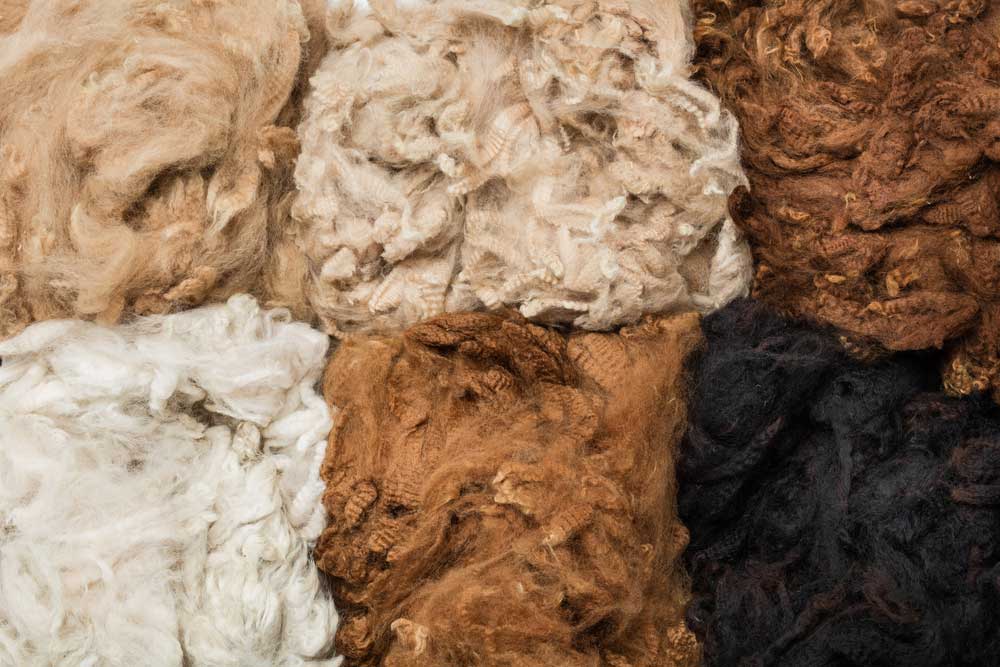
What Can You Make With Alpaca Wool?
First, animal fibers are the best when it comes to protection against cold and wind. Wool is very often used to make outerwear: jackets, vests, coats, capes, ponchos, etc. It is a perfect material for accessories, too. Think warm scarves, shawls, socks, mittens, hats and blankets.
Here is our TOP-5 list of garments you can make using alpaca wool:
1. Alpaca coat
Alpaca coat is the new basic. This type of wool does not itch and easily wards off the cold – a pure luxury for any wardrobe! You may try a long swing coat or a shorter cutaway style, or even something new and chic like sweater-coat.
2. Alpaca poncho
If you prefer the freedom of movement, choose poncho overcoat. It’ll give you the same amount of warmth and pleasure but will not hinder your movements. Alpaca ponchos are very versatile: they look great teamed with leggings, jeans, short dresses, and you can create different looks, from elegant to casual.
3. Alpaca dress
Lightweight alpaca is ideal for dresses. Be it a knit A-line design with a round neck or a sleeveless straight-cut style, you’re bound to turn heads and get lots of wows. Alpaca dresses are best worn during fall and winter.
4. Alpaca sweater
Not all sweaters and cardigans are created equal. Try alpaca this season, and you won’t regret. Just as warm and soft as cashmere fabrics (and even warmer!), it yields itself well to any experiments. A V-neck with side splits or elegant ruching in the front for special occasions – why not?
5. Alpaca scarf or shawl
If you’re still hesitating, start with a simpler item that’ll showcase all the beauty of this South American treasure – a long alpaca scarf or shawl. You might go for 100% alpaca or opt for alpaca and silk blend to get a summerweight texture.
High fashion says – alpaca is here to stay. Available in so many colors and weights, it is too gorgeous to let it pass unnoticed. There’s a bright future for luxury alpaca clothing, and it’s high time we introduced it to our wardrobes.
Alpaca coats and wool wraps make a memorable statement, whereas shawls and gloves add a stylish note to any look.

What to Wear Alpaca Clothing With?
What makes alpaca wool fabric especially amazing is its universality: whatever piece of clothing you create out of it, you will never go wrong. Introducing alpaca pieces to your wardrobe is easy: they can be combined with all kinds of garments and create a stunning look. Just sport those in the table below:
|
Alpaca clothing |
Matching items |
|||||||
|---|---|---|---|---|---|---|---|---|
| clothing & footwear | accessories | |||||||
| coat | short, dark |
classic indigo jeans, high heel shoes of matching colour, sneakers and ankle boots |
silk shawls, knitted hats, berets | |||||
| pencil and sheath skirts with a high waist, jackboots | ||||||||
| long close-fitting dress, jackboots | ||||||||
| black skinny trousers, high leather boots | ||||||||
| knee-length, beige or gray |
casual occasions: skirt suit, office dress special occasions: cocktail dress high heel shoes/boots |
warm shawl, massive bag | ||||||
| long, dark, minimalistic-style | classic straight trousers, ankle boots | bag, gloves | ||||||
| poncho |
jeans, long and short skirts, skinny trousers and slacks, leather leggins, close-fitting dresses and skirts ankle boots, shoes |
long gloves; small hat, beret, shawl; bags with a minimalistic print, small handbag, clutch bag; a massive brooch | ||||||
| dress |
thick winter tights pumps, sandals, ankle boots, ninja Tabi shoes |
hat, knitted cap, earth-tone or chequered scarf/shawl, clutch finished with fur, leather belts | ||||||
| sweater |
casual occasions: jeans, mini skirts, thick winter tights romantic date: dress, skirts office look: trousers high heel shoes |
goes well with anything | ||||||
| scarf/shawl |
bright coats, sweaters, sweatshots, sleeveless/longsleeve shirts, jeans, trousers, long dresses, jackets, coats |
-- |
||||||
Care Instructions
Instead of giving you the voluminous instructions on how to wash alpaca wool garments at home, we can formulate ours in just three words: dry cleaning only. Many articles available online encourage you to be very careful and give it a go, but we strongly recommend you not to wash alpaca. Why?
As any other sort of wool, alpaca is naturally elastic. It can either stretch or shrink after washing, affecting the size of your garment. Chances of damaging alpaca clothes are so high you'd better not risk it and turn to professional cleaners. Plus, if your alpaca garment has a lining, it can fade and eventually pop out from sleeves and hem should the fabric shrink. When one compares the amount of money one usually pays for alpaca fabric, high quality lining and sewing services, even the very thought of losing it all in one wash is unsettling.
Alpaca Fabrics Are Your Green Choice
By this point, you might have already figured out the most important consumer properties of alpaca. To add a cherry on the tort (for some of you, however, this can be the factor of crucial importance), we have collected some facts that prove this sort of wool to be an environment-friendly choice:
Let's start with the most obvious reason: alpaca wool is renewable, so there's no need in killing the animal. It's not a secret that the shearing process is not quite enjoyable for alpacas, but the truth is that they feel much better afterwards. Up to 7 kilos off, after all.
Here's another fact: alpaca wool fibres are extremely durable, which means you won't need to replace the garment for many years. For insanely many years, to be exact — just google for some of the latest alpaca clothing artifacts found not so long time ago in Peru. Moreover, whether you like it or not, in Latin America, they pass down alpaca wool garments generation to generation with no signs of wear even after many decades. You said, "product life cycle in a consumer society", huh?
This one is connected with the hypoallergenic properties of this wool. As we've stated above, it is lanolin-free, which means no aggressive chemical detergents are applied for the wool processing.
Living in the severe climatic conditions of the Andes, alpacas leave a tiny footprint — both in physical, ecological and economical terms. First, yeah, their two-toed feet are small and have a soft paddle that doesn't harm the soil of precious grazing fields. Second, have a look at its front teeth! They work like a mower, just cutting the grass rather than ripping it off the ground with its roots as goats or sheeps do. So, the plant with the higher part of its stalk eaten can still keep growing. Third, alpaca is a camelid and doesn't need that much grass and water as, again, those goats or sheeps. Hence, they also require less territory for pastures, so even small family farms can grow them.
Alpaca is simply a much, much more productive animal compared with those two mentioned above. Remember it takes three cashmere goats for one sweater? Well, don't forget to mix the numbers in case of alpaca: it takes one alpaca to create three sweaters! And those will be way softer and tenderer if compared with merino wool, while not much inferior in these matters to cashmere.
Alpaca Collection at Tissura
At Tissura, you can buy online alpaca wool fabrics by such prominent European brands as Dormeuil, Grosber, Jakob Schlaepfer, Agnona and Loro Piana, as well as Incalpaca — a distinguished Peruvian manufacturer of premium alpaca wool fabrics. In its assortment, you can find various options for creating any pieces of clothing you desire:
- coats,
- jackets,
- dresses,
- skirts,
- ponchos.
The range of alpaca fabrics at Tissura comprises such types as double-faced and double-layered, solid and featuring different patterns and appliques, such as with floral, check, striped, conversational or ethnic motifs. Some of the most remarkable fabrics are represented below. To see the whole our collection of luxury alpaca fabrics, click on the button under the pictures.
Alpaca wool fabric, 132 € (164 US$) per one running metre;
Double faced alpaca wool coating fabric, 234 € (290 US$) per one running metre;
Embroidered alpaca wool fabric, 958 € (1,158 US$) per one running metre;
Embroidered alpaca tweed fabric, 792 € (980 US$) per one running metre
How to stay cool on a hot summer day? Wear fabrics built for the heat. Cotton, linen, viscose, silk – there are dozens of summer-friendly materials you can choose for your wardrobe. The best fabric to opt for when the temperature rises should be breathable and comfortable.
The wedding dress is one of the most important clothing items a woman gets to choose in her lifetime. It can be made of silk or cotton, lace or tulle, be strewn with sequins or embroidered with beads.
.jpg)
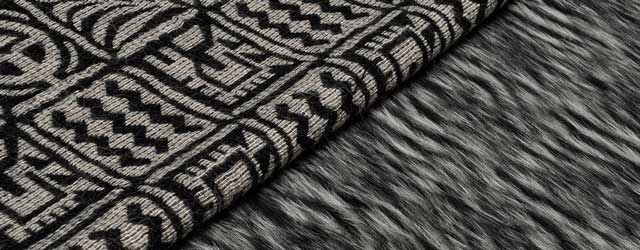
.jpg)
.jpg)
